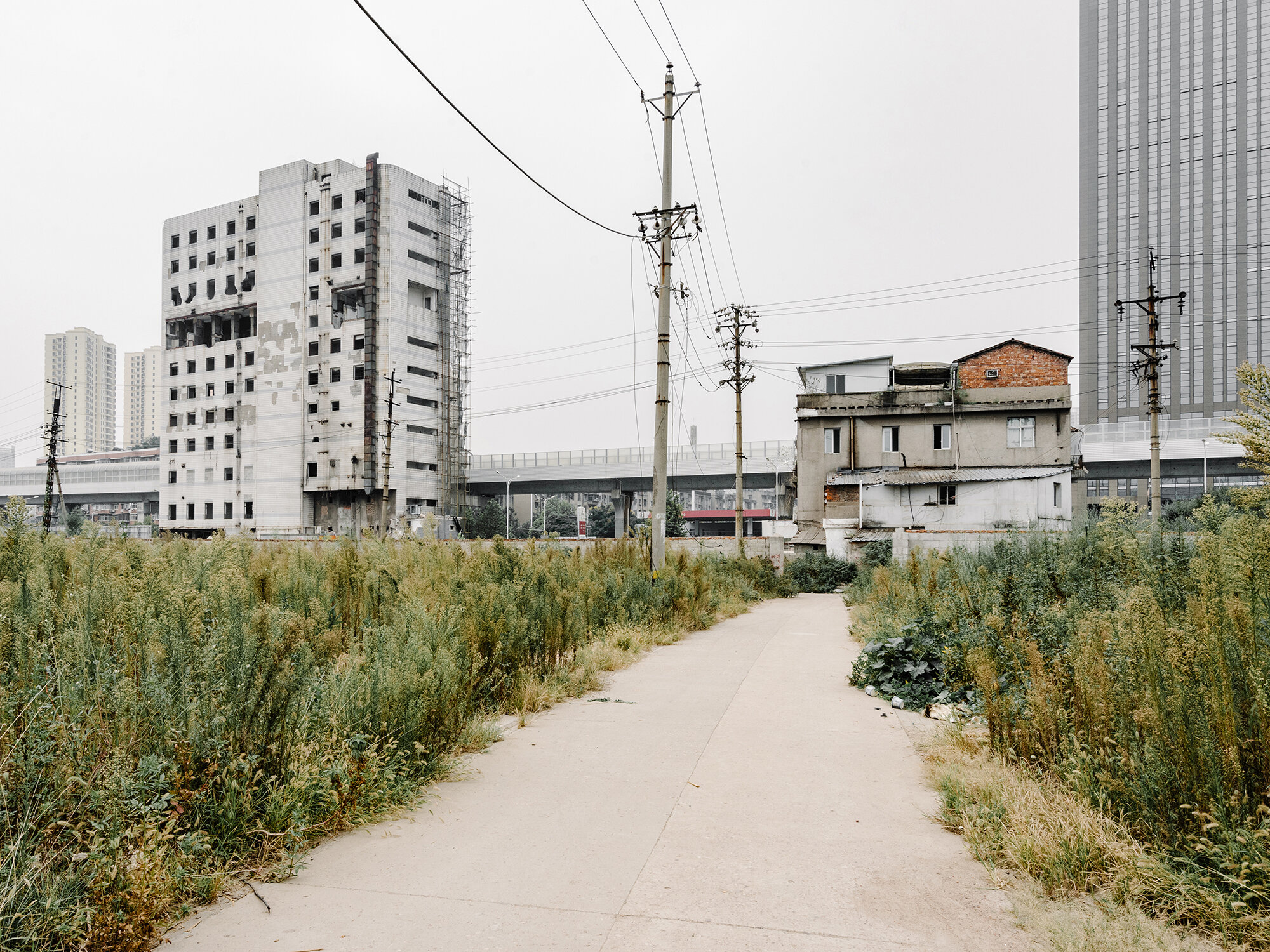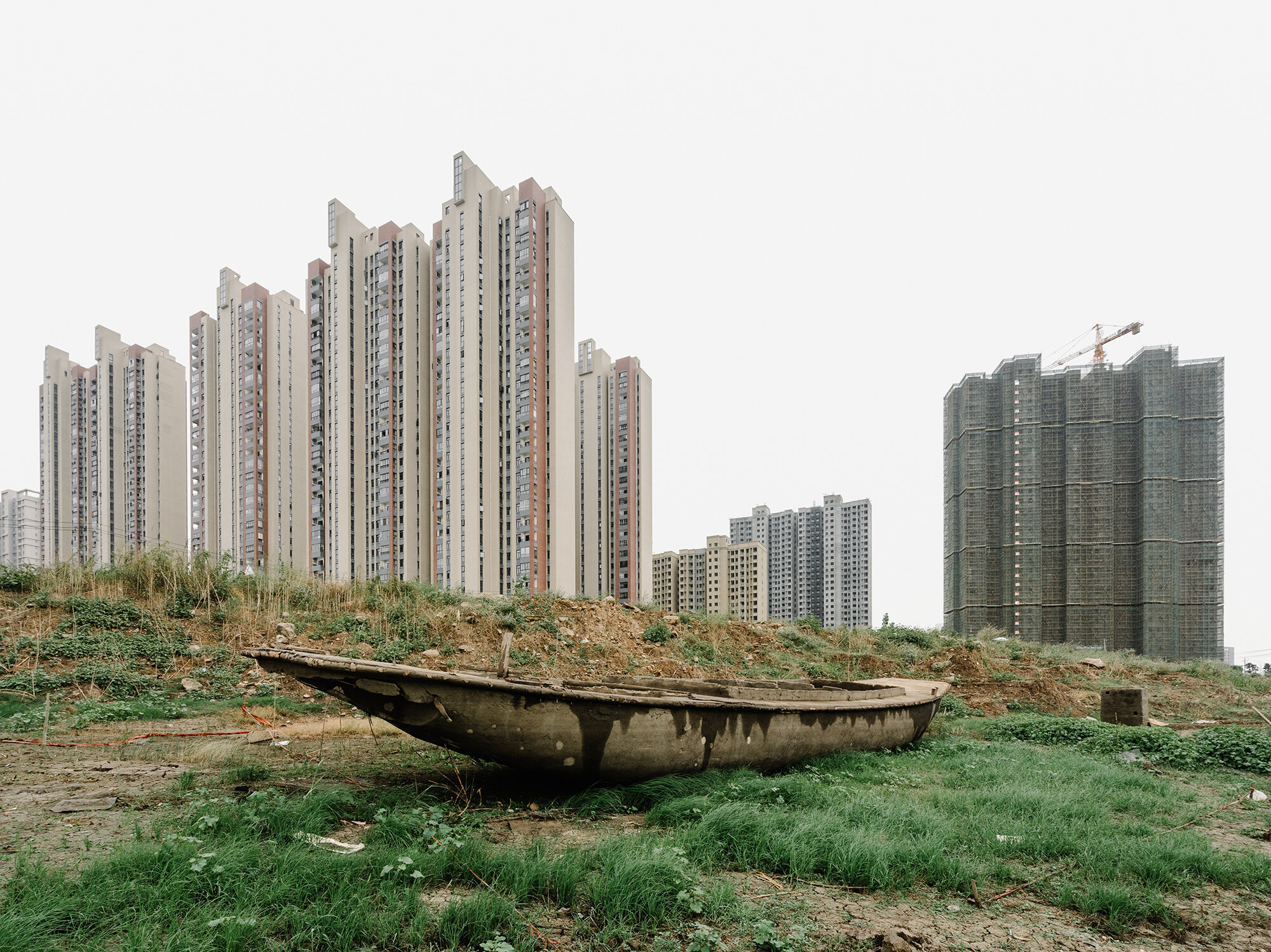
Wuhan Boulevard is an invitation to a journey through a city in progress where time stands still. A journey through an elevated urban railway located in the capital of Hubei province traversed by the Yangtze River: Wuhan. Consciously or unconsciously, deliberately or unthinkingly, the focus on a specific mode of transportation is of particular interest. Wuhan is indeed a major transport and logistic hub connecting key provinces in China, notably thanks to its port. Yet the usual watery landscapes that surround the city are not the focal point of this visual journey.
Wuhan Boulevard is in truth one of the stops of the metro line one Zanoni has used to travel across the city. Immediately struck by this appellation, the artist chooses it while thumbing his nose at the fantasy about the Western famous boulevards, such as the Sunset Boulevard: the legendary route to fame and success in Los Angeles. But here the glamour and the density have turned into a rather unsettling and abandoned urban environment. Here we embark on a train that leads to an in nite landscape made of concrete and empty skyscrapers, an endless road towards unceasing urbanization.
Wuhan Boulevard seizes non-places, in other words transitional spaces which are supposed to be crossed. Probing into social commentary, the series reifies the notion of unqualified city. It allows us to look behind giant advertising panels, unveiling a dreamt city struggling to be completed, a city made of brand-new skycrapers that cohabit with old crumbling housing, a city built to welcome more inhabitants while excluding others. In fact Wuhan is the most populous city in Central China, but it seems its inhabitants have been discarded from these photographs. Where are the people? Only a lone wanderer here and there, or some cloths hung outside testify to the human presence. What is left of their houses then? Are they under construction or being knocked down? Zanoni’s pictures unveil an anxiety about modernization. A sense of dehumanization, of alienation, while enhancing at the same time local attempts to take over these non-places.
Zanoni does not only document what contemporary Chinese metropolises are made of today. He embraces the role of the urban flâneur by exploring the ways in which inhabitants can move or are prevented from moving across their environment. Zanoni climbs up the ground hills, cuts across rubbish mounds, and wanders around forbidden construction areas while gazing from above on the elevated railway. As an attempt to depict a city on the move populated with people on the move, these photographs reinforce the fact that paths are alternatively opened and obstructed. In sum, Wuhan Boulevard intertwines the notions of order with disorder, hope with disillusion, leftover past with an uncertain future. It caught a glimpse of Chinese urban life as the train was passing by.
Marine Cabos, Photography Of China











